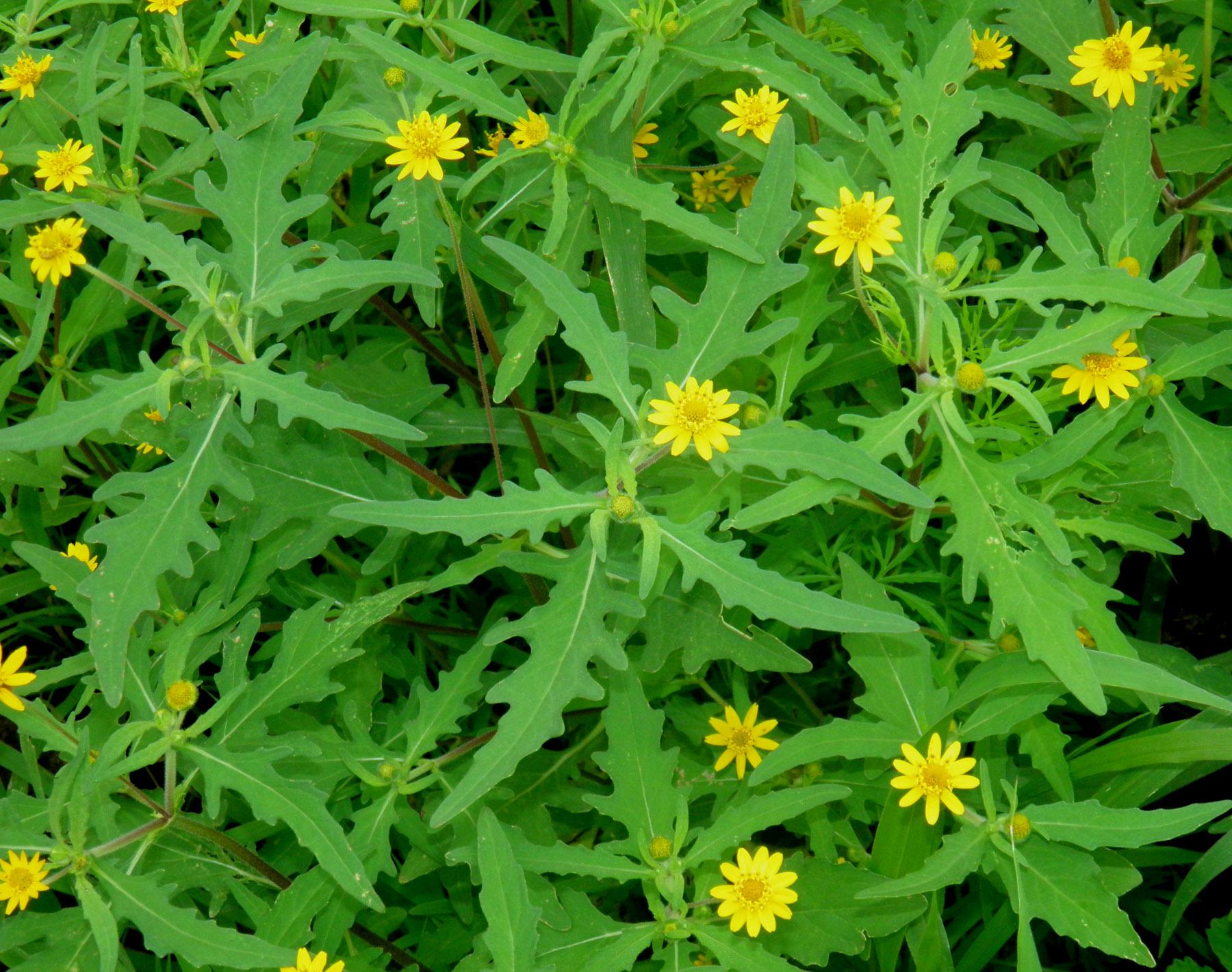
|
Family: Asteraceae |
Annuals, perennials, or subshrubs, 5-50(-150+) cm. Stems erect or prostrate. Leaves cauline; opposite; petiolate (petioles usually winged) or sessile; blades deltate, lance-elliptic, lanceolate, lance-linear, linear, linear-oblong, ovate, or rhombic, sometimes pinnately lobed, ultimate margins entire or toothed, faces usually hairy, usually gland-dotted (at least abaxial). Heads radiate, borne singly (from forks of branches, peduncles often uncinate). Involucres mostly hemispheric (sometimes ± cupulate), [4-]5-20(-30+) mm diam. Phyllaries persistent (outer) or falling with cypselae, 8-20+ in 2 series (outer [2-]5 often ± connate, herbaceous, inner each investing a ray ovary, forming a perigynium, shed with enclosed cypsela). Receptacles flat or convex to conic (their tips, paleae, and spent florets often shed as a unit), paleate (paleae lanceolate to linear, scarious, conduplicate, often with dilated, erose tips). Ray florets [3-]5-13+, pistillate, fertile; corollas yellow, orange, or cream-white, sometimes purplish abaxially (tubes often wanting). Disc florets [3-]45-70[-100+], functionally staminate; corollas ochroleucous, yellow, or orange, tubes shorter than funnelform throats, lobes 5, ± deltate. Cypselae each enclosed within and shed with a smooth, sculpted, or tuberculate, scarious, coriaceous, or hardened perigynium (the ultimate 'fruits' ± compressed, ± D-shaped); pappi 0. x = 12. |
This project was made possible in part by the Institute of Museum and Library Services [MG-70-19-0057-19].
Powered by Symbiota



